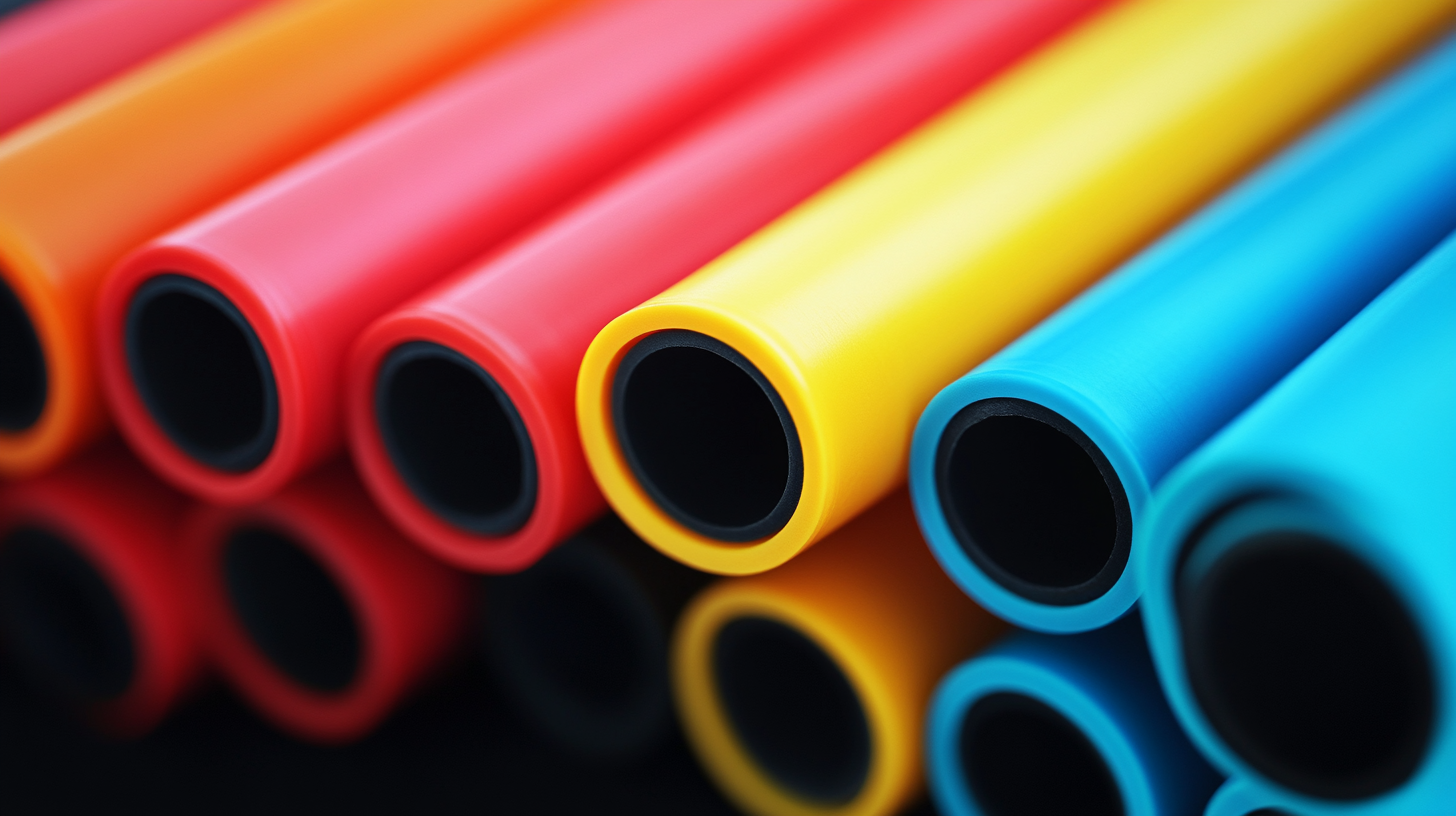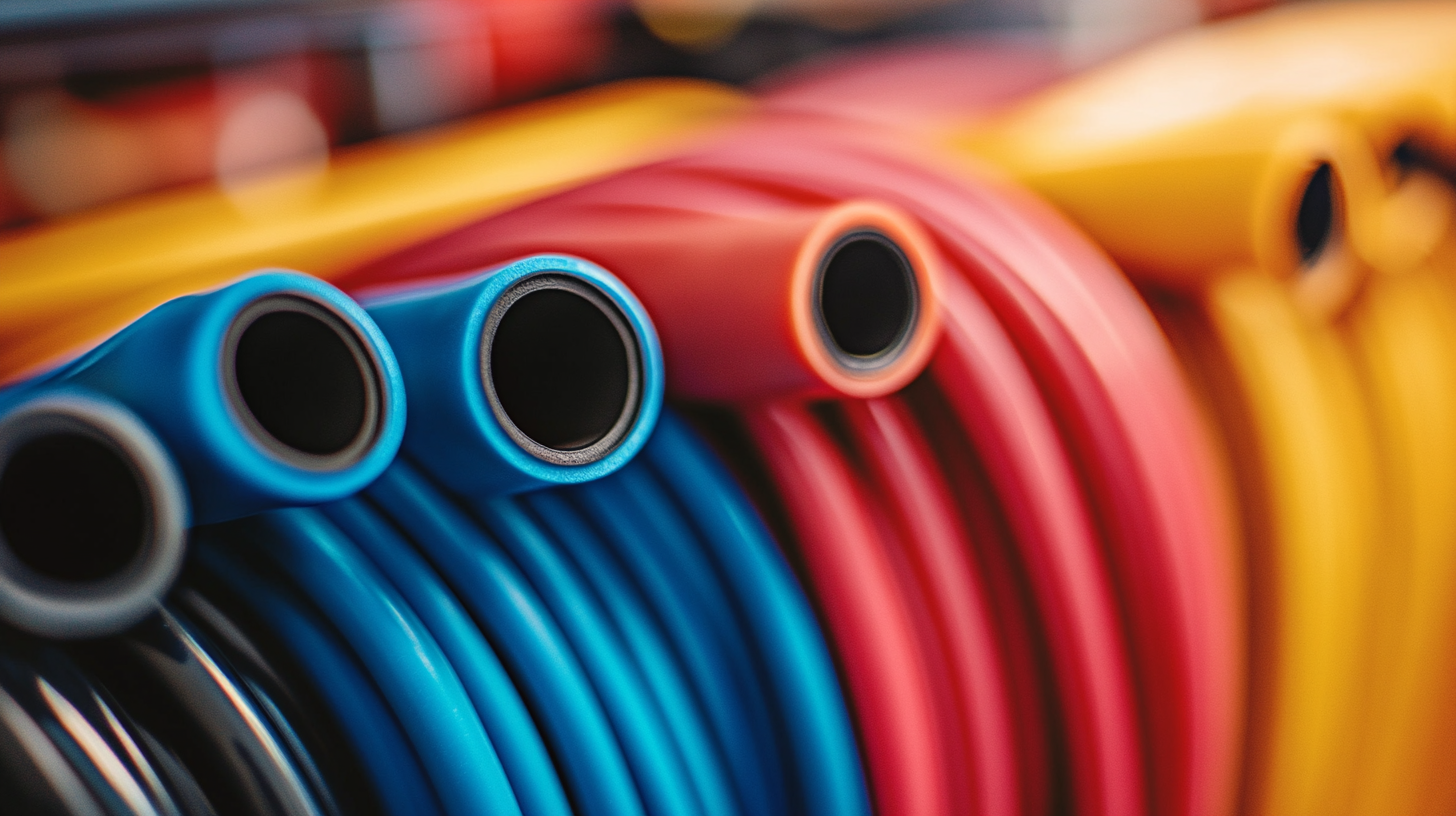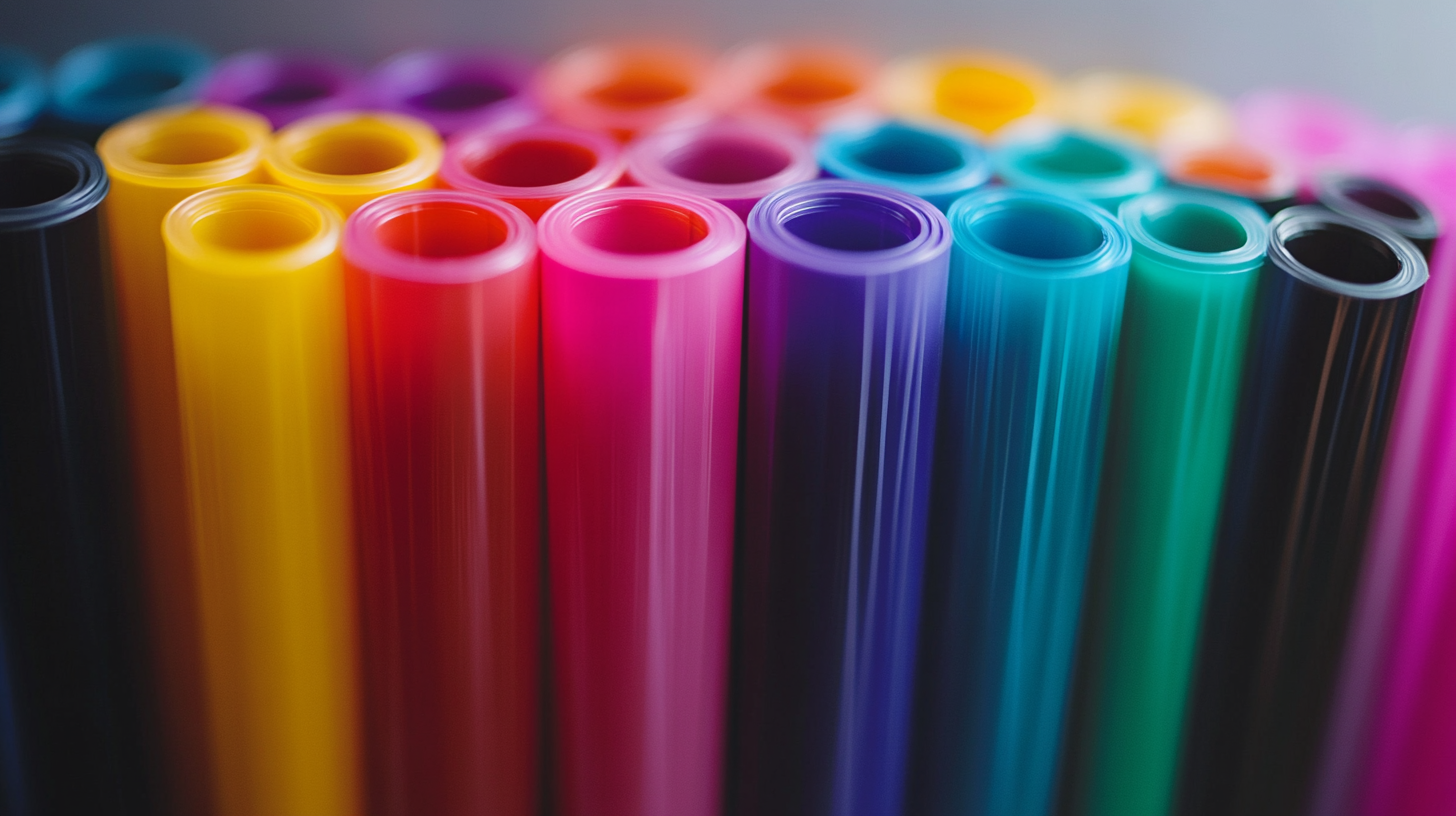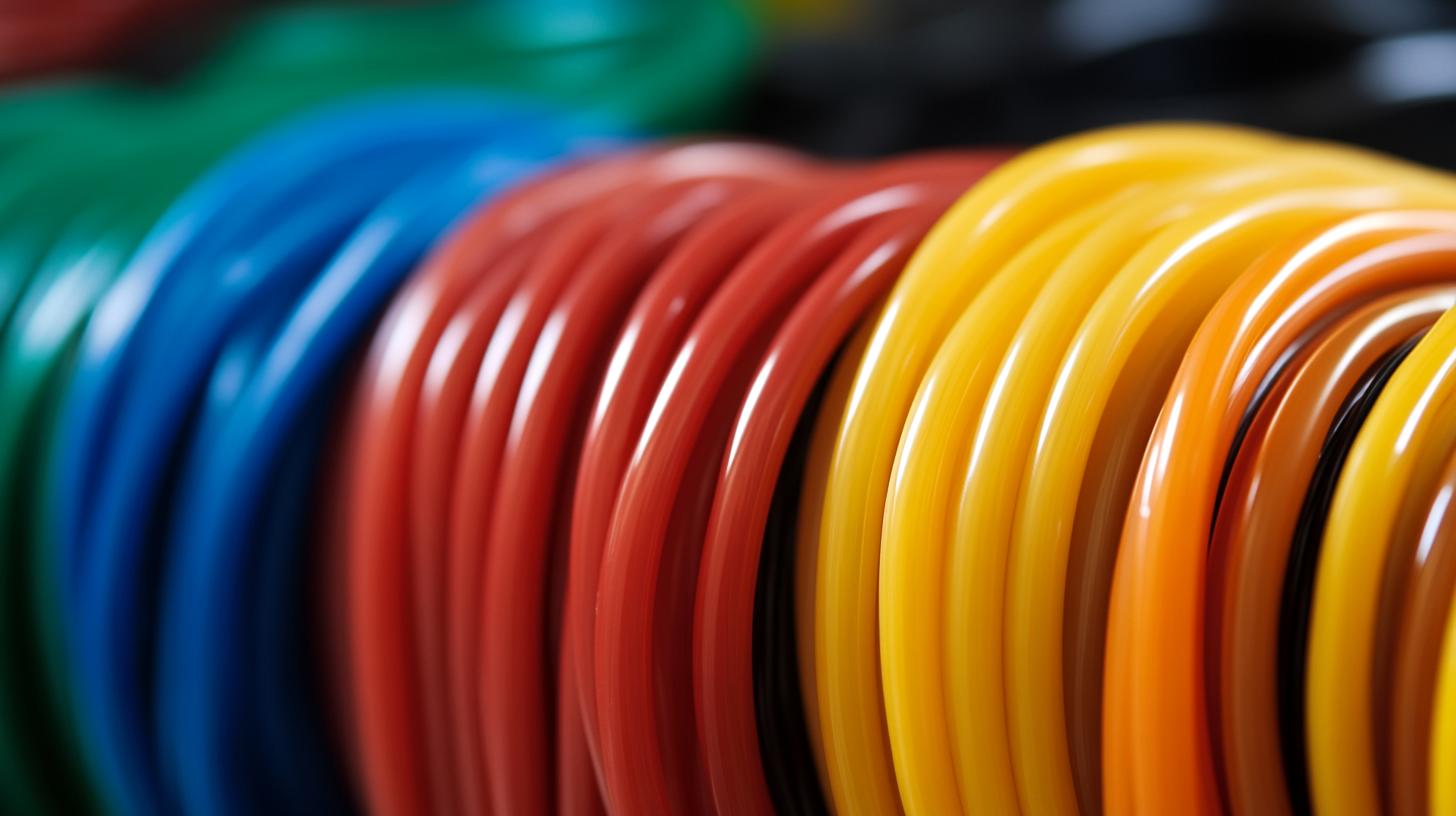- Home
- Products
- Services
- Product concept development
- Engineering
- Design for manufacturability
- Regulatory services
Read more - Material selection and formulation
- Prototyping
- Testing and validation
Read more - Production process development
- Custom tooling
- Manufacturing
- Finishing operations
- Assembly
- Packaging
- Private labeling
- Sterilization
Read more
- Resources
- Careers
- Search
Essential Guide: 10 Key Considerations for Choosing Peelable Heat Shrink Tubing
In today's rapidly evolving industrial landscape, the demand for reliable and versatile insulation solutions is more critical than ever. According to a report by MarketsandMarkets, the global heat shrink tubing market is projected to reach USD 3.5 billion by 2026, growing at a CAGR of 5.6% from 2021. Among various options available, Peelable Heat Shrink Tubing has gained significant attention for its unique properties that enhance both functionality and ease of application. This innovative product serves as a protective solution for wiring and electrical components, providing a robust barrier against moisture, chemicals, and abrasion.
As industries increasingly prioritize efficiency and safety, understanding the essential considerations for selecting Peelable Heat Shrink Tubing becomes vital. Factors such as material composition, shrink ratio, temperature rating, and compliance with industry standards can significantly impact the tubing's performance and longevity. The right choice not only ensures optimal protection for critical components but also enhances operational efficiency, thereby driving productivity. This guide aims to outline the ten key considerations to bear in mind when selecting Peelable Heat Shrink Tubing, helping professionals make informed decisions in their projects.

Understanding the Basics: What is Peelable Heat Shrink Tubing?
Peelable heat shrink tubing is a versatile and practical solution for various electrical insulation and protection needs. Unlike traditional heat shrink tubes, which permanently bond to surfaces when heated, peelable options offer a unique advantage: they can be easily removed after application. This feature makes them particularly valuable in applications where maintenance, modifications, or repairs are anticipated, allowing users to access the underlying components without damage. The fundamental principle behind peelable heat shrink tubing lies in its specialized material composition. Typically made from a blend of polyolefin and other polymer materials, this tubing is designed to shrink when heated, forming a tight seal around wires and connectors. However, the peelable variant incorporates additives that allow for easy removal. This means users can enjoy the benefits of a secure insulation solution while retaining the flexibility to make alterations in the future. In addition to their convenience, peelable heat shrink tubings are available in a variety of sizes, colors, and shrink ratios, catering to diverse industrial and DIY applications. Whether you’re working on electrical wiring in harsh environments or seeking a clean finish for intricate projects, understanding the basics of this specialized tubing can significantly enhance your project's efficiency and longevity.

Key Applications: Where and When to Use Peelable Heat Shrink Tubing
Peelable heat shrink tubing is a versatile solution employed in various industries to provide insulation, protection, and a clean finish to electrical components. Its primary applications can be seen in the electronics sector, where it is used to safeguard sensitive wiring and connectors. The unique feature of peelable tubing allows for easy removal after installation, making it ideal for temporary applications, such as testing circuits or prototyping new designs. This attribute not only simplifies repairs but also ensures that any modifications can be made without damaging the underlying components.
In the automotive and aerospace industries, peelable heat shrink tubing is invaluable for protecting harnesses and cables from environmental factors such as moisture, dust, and abrasion. These applications require robust, reliable materials that can withstand extreme conditions. The peelable aspect of this tubing allows for maintenance personnel to access connections easily, which is crucial for routine inspections and repairs. Furthermore, in medical device manufacturing, this tubing can provide not only insulation but also sterility, ensuring that the devices meet stringent health and safety regulations.
Overall, peelable heat shrink tubing serves a critical role across multiple sectors, enabling efficient workflows and enhancing product longevity. When considering its use, evaluate the specific needs of your project to determine the best fit, ensuring that you leverage its full potential in your applications.

Material Matters: Selecting the Right Type for Your Needs
When selecting peelable heat shrink tubing, the material used is a crucial factor that directly influences performance and application suitability. The most commonly utilized materials include polyolefin, PVC, and fluoropolymers, each offering distinct advantages. According to a report from the Freedonia Group, the demand for heat shrink tubing is projected to grow at a rate of 4.7% annually, primarily driven by the expanding electronics sector and increasing requirements for durable insulation materials.
Polyolefin is favored for its excellent electrical insulation and resistance to chemicals and moisture, making it suitable for a variety of electronic applications. Research from the International Journal of Adhesion and Adhesives emphasizes that the optimal thermal performance of polyolefin allows it to maintain integrity under high temperatures, which can be invaluable for automotive and aerospace uses where extreme conditions are common.
On the other hand, PVC is recognized for its cost-effectiveness and versatility. It is particularly useful in low to moderate temperature applications and is often selected for projects where environmental exposure is minimal. However, it is essential to consider its limitations regarding thermal resistance compared to polyolefin.
Fluoropolymers, while more expensive, provide superior chemical resistance and can handle extreme temperatures, making them ideal for high-performance applications. A study published by MarketsandMarkets indicates that the fluoropolymer market is expected to reach USD 10.1 billion by 2027, underscoring the growing recognition of these materials in demanding environments. Each of these materials has its unique set of properties, and understanding these differences is essential for making an informed choice tailored to your specific needs.

Size and Shrink Ratio: How to Choose the Perfect Fit
When selecting peelable heat shrink tubing, understanding size and shrink ratio is crucial for achieving the perfect fit. The size of the tubing you choose must correspond to the dimensions of the components it will cover. To ensure proper insulation and protection, measure the diameter of the cables or connectors before selecting a tubing size. It’s essential to account for the thickness of the insulation and the overall dimensions of the components involved. Opting for a slightly larger diameter can facilitate easier installation, particularly in applications with multiple wires.
The shrink ratio of the tubing is another critical factor to consider. Shrink ratio indicates how much the tubing will reduce in size when heated, typically expressed in a ratio such as 2:1 or 3:1. A higher shrink ratio allows the tubing to conform better to irregular shapes and diverse component sizes, providing a secure and tight fit. When choosing a shrink ratio, think about the specific applications and any potential temperature fluctuations the installation may experience. Selecting the right combination of size and shrink ratio not only ensures effective protection and insulation but also enhances the longevity and reliability of your electrical components.
Installation Tips: Best Practices for Using Peelable Heat Shrink Tubing
When working with peelable heat shrink tubing, proper installation is paramount to ensure its effectiveness and longevity. One essential tip is to prepare the surface thoroughly before application. Clean the area where the tubing will be placed, removing any dirt, grease, or moisture, which can compromise adhesion and performance. This simple step lays the groundwork for a successful shrink process.
Another key best practice is to correctly size your tubing. Select a size that provides a snug fit over the components you intend to cover, allowing adequate shrinkage without excessive tension. Using a heat source, apply uniform heat while keeping the tubing at an appropriate distance to avoid scorching. Pay attention to the tubing as it shrinks; you want to achieve a tight and even fit without creating wrinkles or bubbles.
Finally, allow the heat shrink tubing to cool naturally after application. This cooling period is critical, as it helps the material to maintain its shape and ensures a strong bond. Avoid forceful cooling methods, such as blowing air directly on the tubing, as this can result in uneven shrinkage. With these installation tips in mind, you can maximize the benefits of peelable heat shrink tubing for your projects.







